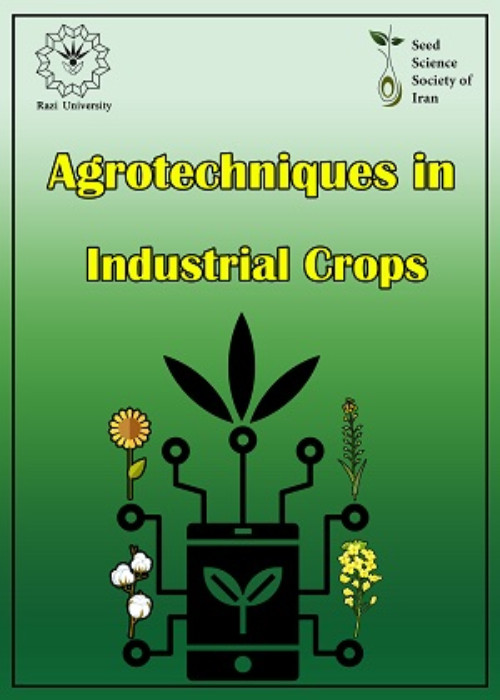Investigation of the Effect of Arsenic Pollution in the Soil of Some Regions of Kerman on Physiological Characteristics of Pistacia atlantica L. and Medicago sativa L.
Author(s):
Article Type:
Research/Original Article (دارای رتبه معتبر)
Abstract:
Heavy metal poisoning and its accumulation in food chains are one of modern societies' main bioenvironmental and health problems. This study was conducted to investigate the effect of arsenic contamination in soil on the physiological characteristics of pistachio and alfalfa in the form of a completely randomized design. Plant and soil sampling was done in 8 regions of the Kerman province. The results related to the pigments showed that they were influenced in both pistachio and alfalfa by the region. The highest levels of chlorophyll a, chlorophyll b, and total-chl in the alfalfa plant were related to the Shahr-e-Babak region where a similar result was seen for pistachio. chl a (alfalfa (28.50±0.37), pistachio (30.33±0.32)), Chl b ((Alfalfa: 0.13±0.23), pistachio (9.10±0.11)), total-chl (Alfalfa (8.63±0.38 (pistachio: 39.43±0.17)). The results of the regression trend of intra-tissue and peripheral arsenic changes also showed that the amount of peripheral arsenic was able to account for a higher percentage of changes in chl an in both plants and the changes model of chl due to changes in peripheral arsenic was as the second degree. But, the amount of chl b was affected by the amount of intera-tissue arsenic. The highest amount of flavonoid in pistachio was observed in Shahr-e-Babak and Bayaz regions (alfalfa (71.50±0.65), pistachio (74.50±1.32)) and the highest amount of carotenoid was obtained from Shahr-e-Babak, Bayaz, and Anar in alfalfa and pistachio. The amount of alfalfa flavonoid was more affected by intra-tissue arsenic, while in pistachio, the peripheral arsenic had more impact on flavonoids than intra-tissue arsenic. The highest amount of total carbohydrates in alfalfa and pistachios was observed from Shahr-e-Babak and Zarand regions, while the highest amount of protein was observed from Anar, Bayaz, and Kabutar-khan regions. In general, alfalfa is a more arsenic-accumulating plant, shows better resistance to it, and is less affected.
Keywords:
Language:
English
Published:
Agrotechniques in Industrial Crops, Volume:2 Issue: 3, Summer 2022
Pages:
140 to 155
magiran.com/p2509418
دانلود و مطالعه متن این مقاله با یکی از روشهای زیر امکان پذیر است:
اشتراک شخصی
با عضویت و پرداخت آنلاین حق اشتراک یکساله به مبلغ 1,390,000ريال میتوانید 70 عنوان مطلب دانلود کنید!
اشتراک سازمانی
به کتابخانه دانشگاه یا محل کار خود پیشنهاد کنید تا اشتراک سازمانی این پایگاه را برای دسترسی نامحدود همه کاربران به متن مطالب تهیه نمایند!
توجه!
- حق عضویت دریافتی صرف حمایت از نشریات عضو و نگهداری، تکمیل و توسعه مگیران میشود.
- پرداخت حق اشتراک و دانلود مقالات اجازه بازنشر آن در سایر رسانههای چاپی و دیجیتال را به کاربر نمیدهد.
In order to view content subscription is required
Personal subscription
Subscribe magiran.com for 70 € euros via PayPal and download 70 articles during a year.
Organization subscription
Please contact us to subscribe your university or library for unlimited access!



